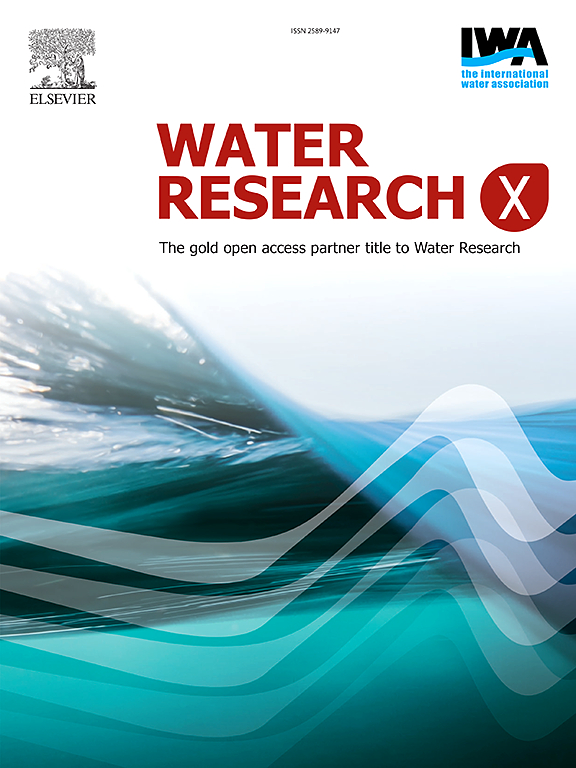基于多尺度校正模块神经网络架构的多区计量区域用水需求预测
IF 7.2
2区 环境科学与生态学
Q1 ENGINEERING, ENVIRONMENTAL
引用次数: 0
摘要
对多个空间和时间上相关的地区计量区域(DMA)进行短期需水预测(STWDF)是实现城市供水管网精细化管理的重要基础。然而,由于与总体用水量相比,特定地区计量区域需求具有更大的不确定性,因此准确预测 STWDF 面临着巨大挑战。本研究引入了一种创新的网络架构--多尺度校正模块神经网络,该架构建立在长短期记忆(LSTM)网络和卷积神经网络(CNN)基础上,并增强了注意机制,可同时预测意大利北部一个城市中 10 个 DMA 一周内一小时的 STWDF 时间分辨率。该框架利用多变量修正来完善和提高输出精度。研究结果表明,与传统的门控递归单元或 LSTM 模型相比,所提出的模型集成了校正模块,特别是那些利用 DMA 间相关性的模块,在所有评估指标中平均每个 DMA 的性能提高了 5%-20% 。此外,该模型在单个 DMA 预测、总需水量和极端条件这三种情况下都能持续提供卓越的准确性,并在整个过程中保持稳定的性能。此外,可解释性分析强调了这一创新结构的可行性,并突出了气象特征对某些 DMA 级 STWDF 预测模型的贡献。统一的输入输出框架优雅地简化了多个 DMA 的 STWDF 流程,为该领域的未来研究提供了新的见解和方法。本文章由计算机程序翻译,如有差异,请以英文原文为准。
Water demand forecasting in multiple district metered areas based on a multi-scale correction module neural network architecture
Short-term water demand forecasting (STWDF) for multiple spatially and temporally correlated District Metering Areas (DMAs) is an essential foundation for achieving more refined management of urban water supply networks. However, due to the greater uncertainty associated with specific DMA demand compared to overall water usage, accurately predicting STWDF poses significant challenges. This study introduces an innovative network architecture—the multi-scale correction module neural network, built upon Long Short-Term Memory (LSTM) networks and Convolutional Neural Networks (CNN) enhanced with Attention mechanisms—for simultaneous STWDF with a temporal resolution of one hour over a week for 10 DMAs located in a single city in northern Italy. This framework utilizes multivariate corrections to refine and enhance the output accuracy. The results reveal that, in comparison to traditional Gated Recurrent Unit or LSTM models, the proposed model with integrated correction modules, particularly those that leverage inter-DMA correlations, improves performance across all evaluation metrics by an average of 5 %-20 % per DMA. Additionally, it consistently delivers superior accuracy across three scenarios: single DMA forecasting, total water demand, and extreme conditions, while maintaining stable performance throughout. Furthermore, the interpretability analysis underscores the feasibility of this innovative structure and highlights the contribution of meteorological features to the predictive model in some DMA-level STWDF. The unified input-output framework elegantly simplifies the STWDF process across multiple DMAs, providing new insights and methodologies for future research in this domain.
求助全文
通过发布文献求助,成功后即可免费获取论文全文。
去求助
来源期刊

Water Research X
Environmental Science-Water Science and Technology
CiteScore
12.30
自引率
1.30%
发文量
19
期刊介绍:
Water Research X is a sister journal of Water Research, which follows a Gold Open Access model. It focuses on publishing concise, letter-style research papers, visionary perspectives and editorials, as well as mini-reviews on emerging topics. The Journal invites contributions from researchers worldwide on various aspects of the science and technology related to the human impact on the water cycle, water quality, and its global management.
 求助内容:
求助内容: 应助结果提醒方式:
应助结果提醒方式:


